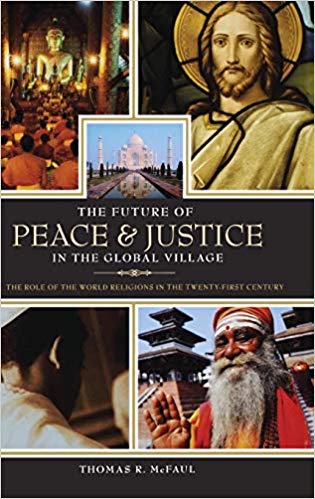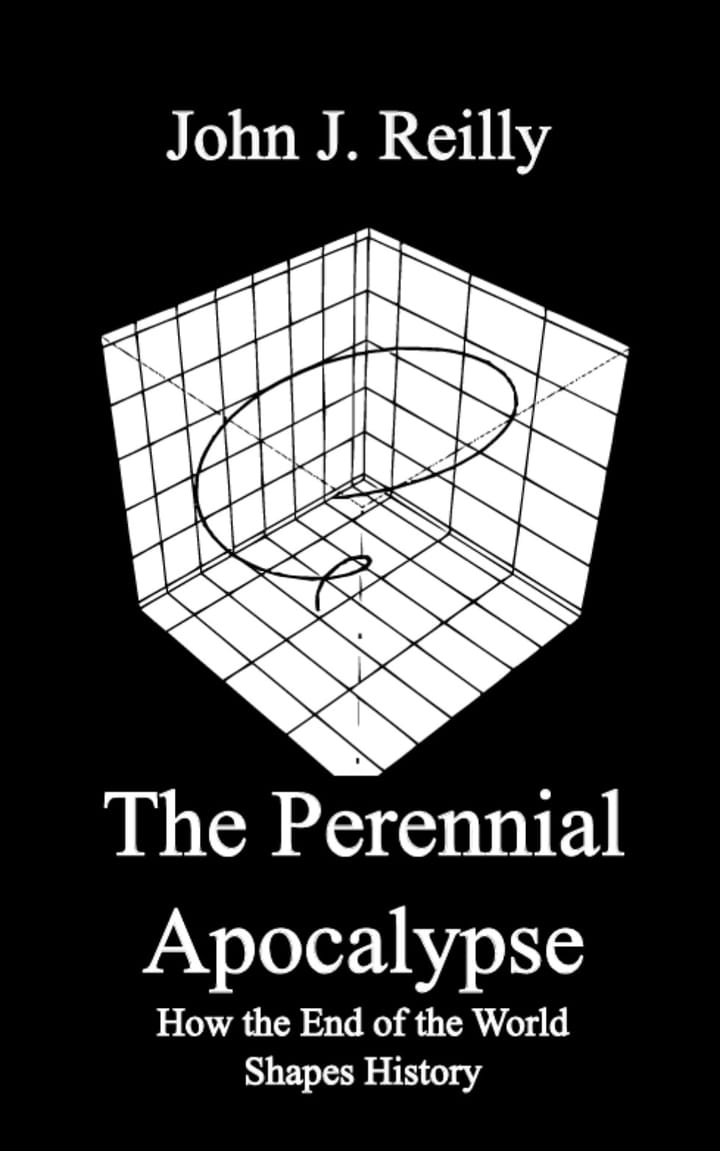The Long View: The Future of Peace and Justice in the Global Village

C. S. Lewis famously made much the same argument in the Abolition of Man that McFaul makes here: the ethical systems of most world religions are strikingly similar, no matter how incompatible their ultimate claims about reality are.
An interesting aside here is if you look at the ethnographic literature, which typically doesn’t weight by the number of people who possess a particular culture, you will find much greater diversity of ethical systems. The number of people involved is often as few as thousands, rather than millions or billions which is what you get when you look at world religions.
Peter Kreeft took that idea and ran with it in his book Ecumenical Jihad, but John J. Reilly was skeptical of grand alliances between religions in the manner that Kreeft and McFaul describe.
The Future of Peace and Justice in the Global Village : The Role of the World Religions in the 21st Century
By Thomas R. McFaul
$49.95, Approx. 310 pp.
Praeger Publishers, 10/30/2006
ISBN: 0275993132
The hypothesis that the whole world is on a glide path toward a post-religious future is no longer accepted uncritically. Having gotten that far, however, political scientists have little notion what role religion will play in a world whose component parts seem fated to react with each other ever more intimately. Thomas R. McFaul, Professor of Ethics and Religious Studies Emeritus at North Central College in Naperville, Illinois (and author of Transformation Ethics) tries in this book to sketch the religious topography of the world and suggest ways that its main religious components might contribute to the harmonization of a more united world, or at least help to prevent a world of perpetual sectarian strife.
The author’s argument is essentially that of John Rawls: the most likely way to achieve concord is by prescinding from questions of worldview or theology and by focusing on those elements of the world’s ethical traditions that are compatible with the categorical imperative. He comes to this conclusion after an analysis of what he takes to be the seven major religions: Buddhism, Hinduism, and Jainism in the Asian group; Christianity, Islam, Judaism, and Zoroastrianism in the Middle Eastern group. These faiths simply do not have compatible views on God, the afterlife, or the ontological status of their scriptures. He also rejects the proposal that the religions could easily unite transcendentally, at the level of religious experience. Even if the wordless apprehension of the divine is the same for mystics of all faiths, they eventually have to talk about what they have experienced, and then the fist-fights start. In contrast, standards of decent behavior are remarkably similar around the world whether people justify them in terms of the will of God or the need to avoid bad karma. Variations on the Golden Rule, the author argues, are very close to being universal.
The author would settle provisionally for a world of religious pluralism, but expects a near-term future of exclusivity, in which religious groups seek to divinize war and the state. His preference, however, is for a world in which the great religions reinterpret their traditions in such a way as to withdraw their claims to exclusive truth. He expounds at length on the different ways the Asian and Middle Eastern groups might do this, but the common theme is the need for an acknowledgment that none of theses faiths exhausts the truth and all of them are moving toward it. Only unity, or the prospect of unity, would really conduce to a stable world. In the long run, we are told, the tolerance necessary for pluralism is unacceptable, because tolerance can protect oppression.
Resistance is useless, particularly in the case of gender relations. The author purports to be in search of common ground among the great religions. However, when he finds one such common patch in the fact that no religious tradition treats men and women identically, he immediately digs up the patch and paves it over with gender equality. Similarly, it will be necessary for the ancient faiths in most cases to abandon their assumption that certain social institutions are “in the nature of things.” The state itself, of course, would have to be secular.
This book is a useful and interesting exercise. It is also good evidence, if any more were needed, that the one place that a Rawlsian reformation will not lead is to peace.
Copyright © 2006 by John J. Reilly
Support the Long View re-posting project by downloading Brave browser. With Both Hands is a verified Brave publisher, you can leave me a tip too!



Comments ()